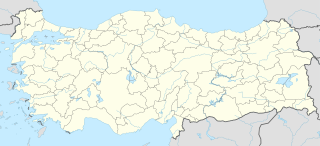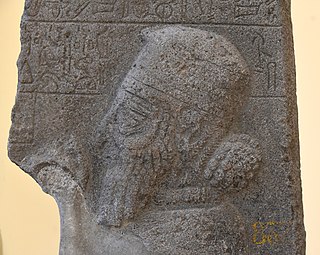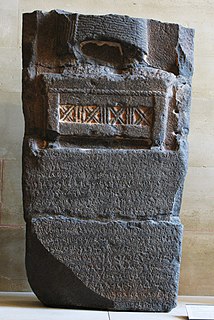 W
WThe Neo-Hittite states are sorted according to their geographical position.
 W
WTunna, also Dunna or Atuna, was an ancient Anatolian city. In classical antiquity Tunna was known as Tynna. Today it is known as Porsuk Hüyük or Zeyve Höyük.
 W
WIrhuleni was King of Hamath. He led a coalition against the Assyrian expansion under Shalmaneser III, alongside Hadadezer of Damascus. This coalition succeeded in 853 BC in the Battle of Qarqar a victory over the Assyrians, halting their advance to the west for two years. Later Irhuleni maintained good relations with Assyria. His son was, in Luwian, Uratami.
 W
WTunna, also Dunna or Atuna, was an ancient Anatolian city. In classical antiquity Tunna was known as Tynna. Today it is known as Porsuk Hüyük or Zeyve Höyük.
 W
WTunna, also Dunna or Atuna, was an ancient Anatolian city. In classical antiquity Tunna was known as Tynna. Today it is known as Porsuk Hüyük or Zeyve Höyük.
 W
WWarpalawa(s) was a late 8th century BC Late Hittite king of Tabal in south-central Anatolia. The political center of this Early Iron Age regional state was probably Tuwanuwa. Among other commemorative monuments, Warpalawas most notably commissioned the carving of the İvriz relief, a rock relief at the site of Ivriz near a spring, south of Tuwanuwa in the province of Konya. In the relief, he is depicted with the storm-god Tarhunzas. His attire in the relief is seen as an evidence for his kingdom's close affinity with the Phrygians. The relief is accompanied with a hieroglyphic Luwian inscription. The Tabalian king Urballa, mentioned in the Assyrian texts at the time of Tiglath-pileser III and Sargon II probably is Warpalawas.
 W
WYahu-Bihdi also called Ilu-Bihdi was a governor of Hamath appointed by the Assyrian government. He declared himself king of Hamath in 720 BC and led a revolt which was promptly suppressed. Yahu-Bihdi himself was flayed alive. His revolt occurred roughly shortly after the conquest of the Kingdom of Israel by Sargon II and roughly simultaneously with revolts in Babylon as well as in Arpad, Damascus and elsewhere in the Levant.
 W
WZakkur was the ancient king of Hamath and Luhuti in Syria. He ruled around 785 BC. Most of the information about him comes from his basalt stele, known as the Stele of Zakkur.